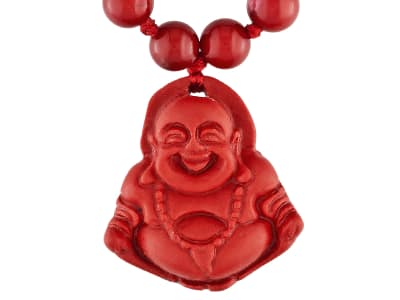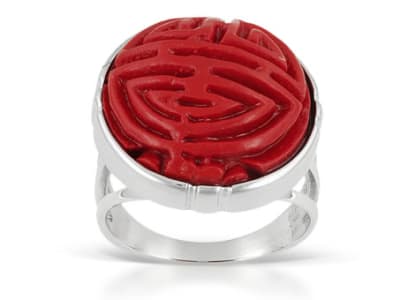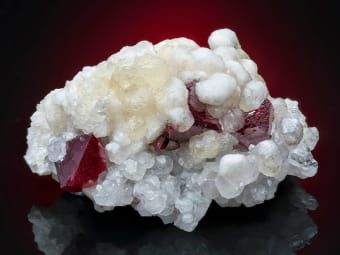Named from Arabic and Persian words for "dragon's blood," cinnabar comes in a remarkable brick-red color and has been used as a pigment in China as far back as prehistoric times. Gem crystals are rare collector's pieces, but opaque material is often cut into cabochons. Natural cinnabar is a major mercury ore and is not used in jewelry making, but a resin product that closely resembles it, is used in jewelry. The red color is so fresh and vibrant that, in China, many people call it "China Red."
General Information
Cinnabar Colors
-
 Red
Red
Alternate Names
Cinnabarite
Countries of Origin
Myanmar; Papua New Guinea; Malaysia; Kazakhstan; Portugal; Bosnia And Herzegovina; Greece; Austria; Mongolia; Korea (the Republic of); Morocco; Unknown; Brazil; Slovenia; Chile; Colombia; Ecuador; Argentina; Hungary; Japan; Ukraine; Taiwan (Province of China); Bolivia (Plurinational State of); India; New Zealand; Canada; Turkey; Belgium; Namibia; Italy; South Africa; Georgia; Peru; Germany; Afghanistan; Russian Federation; Fiji; Czechia; United States of America; United Kingdom of Great Britain and Northern Ireland; Sweden; China; Ireland; Poland; Slovakia; Bulgaria; France; Serbia; Tunisia; Kyrgyzstan; Croatia; Romania; Philippines; Uzbekistan; Switzerland; Spain; Azerbaijan; Norway; Swaziland; Mexico; Zimbabwe; Australia; Montenegro; Tajikistan; Indonesia
History
Cinnabar was used to create the scarlet red pigment vermillion. The earliest use for vermillion comes from a Neolithic burial site in Palencia, Spain that dates to 5,000 years ago. The body was covered in vermillion, and it is believed that the pigment was used to preserve the remains of the deceased. The pre-Columbian civilizations of Mesoamerica (c. 1200–400 BCE) used powered cinnabar to decorate statues found in ancient temples. There is evidence for organized cinnabar mining in Huancavelica, Peru that dates to 1400 BCE. It is believed that the pre-Columbian Andean cultures and the Incas used the mercury ore to refine gold. The powder was used for thousands of years as a rouge and as an ink for writing. In the Neolithic period in China the cinnabar was powdered and mixed with the sap of rhus verniciflua trees to create a natural plastic. The lacquer was applied in multiple layers to vessels and decorative objects and then carved into geometric patterns or scenes from nature. This technique was popular from 600 BCE until 200 AD in China.
Care
Gentle wear, avoid ultrasonics and high heat. Modern resin cinnabar is safe and does not contain mercury.
Creation Classification
Cinnabar Natural
Natural cinnabar is mercuric sulfide HgS and is a major mercury ore. It was once used as a red pigment (vermillion) in paint.
Cinnabar Resin
The cinnabar used in modern jewelry is molded and dyed plastic.
Material Combination
Chicken-Blood Stone
Chicken-Blood Stone is one of the most prized ornamental stones for gem carving in China. The stone has cinnabar inclusions in a mixture of Alunite, Dickite, Kaolinite, and Quartz. The stone is supposed to bring good luck and fortune. The name comes from the red spots or streaks in the stone. It is also called Changhua and Balinyouqi stone after the locations where it is mined.




